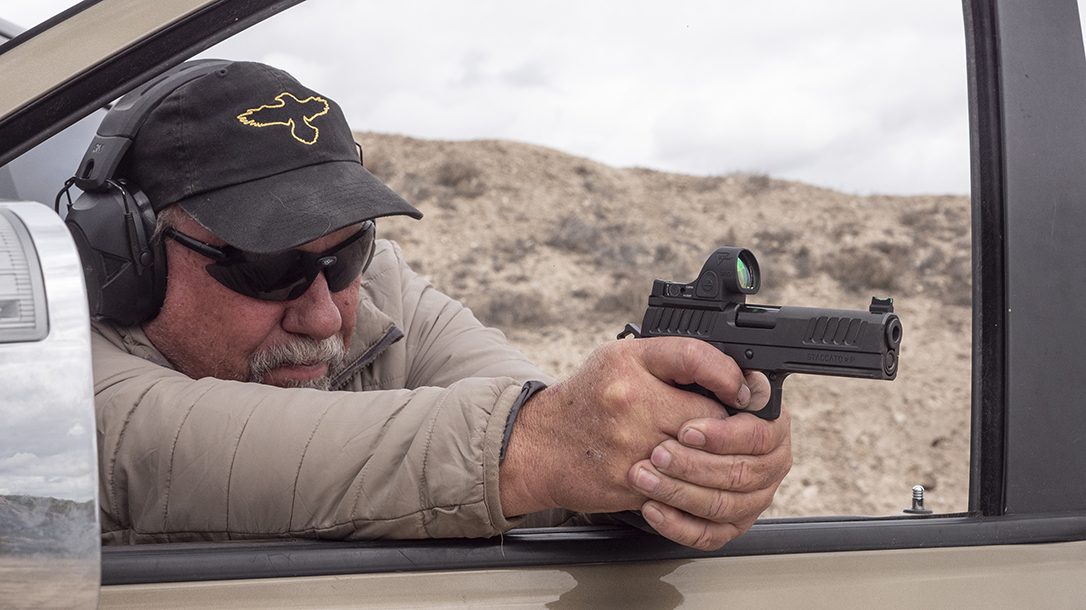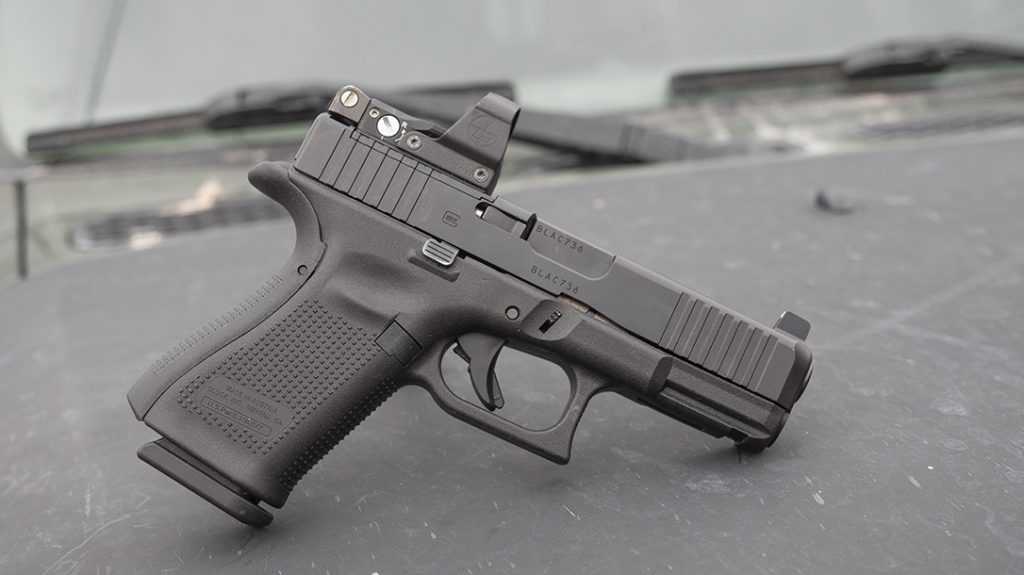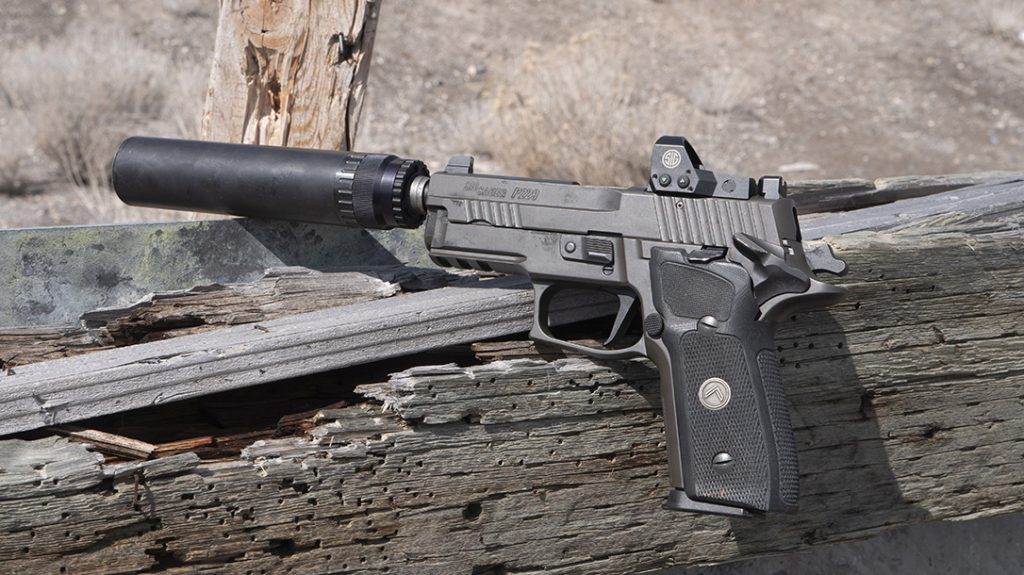Many shooters have come to embrace the idea of mounting reflex or red-dot sights on top of their pistols. Still, some people lambaste using such sights for anything outside competition, but that dogma is quickly fading. Hyperbole is being replaced with experience. Properly used, a high-quality reflex sight can be a true lifesaver. The trick is in wading through the hearsay while maintaining realistic expectations.
The Excuses
You might hear people say, “But red dots break!” Well, in more than 40 years of shooting, I’ve seen every conceivable level of pistol fail, from cheap polymer guns to works of machining art. I’ve seen front and rear sights fall off, or lose their tritium or fiber-optic inserts. Firearms are mechanical, failure is inevitable, and “indestructible” is a marketing ploy, not reality.
Advertisement — Continue Reading Below
Reflex sights are no exception, and just like other optics, they failed a bunch early on. But they have improved considerably since then. Are they perfect? No, but they’re getting there, and more models are coming online to fit most shooters’ needs. Not everyone needs a reflex sight that can still operate after being dropped 10,000 feet, run over by a tank or submerged for hours at a time. Some shooters do—or at least think they do—but most people don’t and are well served by any high-quality model out there.
I’ve also heard, “But red dots are slow!” This is an interesting statement, since the fastest shooters on the planet use red-dot sights and have for years, and our most elite warfighters use them, too. In this equation, speed has more to do with the shooter than the sight. Detractors focus on speed at 7 yards or closer. If that’s why you added a reflex sight, expect disappointment—just don’t blame the sight. Any difference will be negligible at that distance, and the better you are, the smaller the difference.
Advertisement — Continue Reading Below
On the other hand, aging shooters may actually see a dot more easily compared to a small iron sight out front. Achieving accuracy and speed at close range is about your position, natural point of aim, stability and trigger pull, not whatever sight you’re using.
Reflex sights really shine at mid to longer ranges. With such a sight on a handgun, I can regularly create fist-sized groups on steel plates at 50 yards from a supported position, and the groups are even tighter at 25 yards while firing off-hand. If you can hold the dot steady, you can get hits, and it’s a lot easier than it would be with iron sights alone. The trick is doing what you have always done. Build solid basics and bring the pistol to the target the same way you always have. Now line up the dot. Don’t chase it—just see it. Don’t change your stance, grip or anything else. The basics will still win the day.
It’s also easier to move and shoot with a red-dot sight, or tackle targets with just one hand. Simply hold the dot on the target and pull the trigger—there’s no rear sight to align. With solid fundamentals, including a solid grip and follow-through, you’ll be more faster and more accurate in every situation outside close-quarters fighting, where most people don’t use their sights anyway.
Advertisement — Continue Reading Below
The Options
I divide reflex sights for pistols into three categories: duty, carry and practice. Duty sights are exposed to the elements—rain, snow, mud and muck. They get banged against walls, car doors and other objects. This is pretty typical in law enforcement, security and military operations. Trijicon’s Specialized Reflex Optic (SRO) and Ruggedized Miniature Reflex (RMR) are solid examples of duty-ready models. Leupold’s DeltaPoint Pro and Aimpoint’s new ACRO also fit into this category. They’ve all proven that they can handle the toughest conditions and the harshest abuse. In fact, the Leupold DeltaPoint Pro and Trijicon RMR have even secured military contracts.
Carry models need to be strong and hold up to daily use, but they’re typically smaller and easier to conceal than duty sights, thus fitting on smaller pistols. Shield makes several, including the RMSc, which is one of the company’s most popular models, and the new RMSw is waterproof and uses a harder glass screen than other models. The Burris FastFire 3 and SIG Sauer ROMEO1 are both great carry options as well.
Advertisement — Continue Reading Below
Practice sights are really those I haven’t used for duty or carry, and they haven’t undergone any extensive military testing. But they’re great for range practice, training and just plain fun. These models also cost a lot less than duty or carry sights, and they’re solid choices for new users or those who want to avoid taking the plunge on the more expensive designs. Most work fine, though some are better than others, and they won’t break the bank. They’re just not something I would bet my life on.
Personal Testing
Trijicon’s SRO was specifically built for pistol use. When I got my hands on its for testing, I treated it worse than any reflex sight I’ve used to date, and it didn’t flinch. Even after rapping it against walls, cars and other obstacles, my test SRO never missed a beat The SRO’s large, round screen also makes it easy to pick up the dot. The glass is clear, and the dot has less “sparkle” than other models. The battery is accessible without removing the sight from the gun, and it’s waterproof to a depth of 10 feet. Finally, the SRO is marginally larger than the RMR Type 2 but still has the same footprint and bolt pattern, so it’s compatible with many pistols already.
Advertisement — Continue Reading Below
Aimpoint’s ACRO is the only pistol-capable reflex sight with a fully contained emitter, making it impervious to the elements. Debris cannot cover it and render your dot useless when you need it. Also, rather than bolting onto the gun, it uses the same crossbar as many rifle-specific reflex sights, making the ACRO as solid as it gets. Those shooters requiring its capabilities will find them nowhere else. It’s as close as you will get to a rifle-capable reflex sight designed for pistol use.
The Shield RMSw is becoming more and more popular for concealed carry, and the waterproof capabilities are helpful. Installed on my G19 Gen5 MOS using Shield’s mounting plate, it matches perfectly with the slide without obscuring the front and rear iron sights. In a close-quarters pistol class, I found that the dot was clear in bright daylight and withstood the recoil from several hundred rounds of 115-grain +P ammunition.
Into The Future
The firearms industry has come a long way with pistol-mounted reflex sights. Are they perfect? No. But they’re getting better, and I think they have a bright future. These aren’t magic wands that will make you lightning fast. Instead, they offer serious advantages for most shooters. Each reflex sight has its strengths and weaknesses depending on its particular mission and end-user. As they become smaller and more durable, their popularity will only continue to grow.
Advertisement — Continue Reading Below
If you’re interested in using a reflex sight, get some training. Don’t just shoot a magazine and call it good. If you are going to use a reflex sight for defense, step up and use a proven model. Above all, practice! Because a reflex sight can help you aim. You still have to shoot, and that only gets better with practice.
This article is from a previous issue of Personal Defense World magazine. Grab your copy at OutdoorGroupStore.com.


























